USE A HOLISTIC APPROACH TO ATTRACT AND RETAIN TOP-LEVEL STAFF
LESSONS LEARNED:
1. It’s critically important that current and future employees understand and support the mission, culture and values of their organization.
2. The workplace flexibility that COVID forced upon organizations has become an expectation. Those organizations that continue to provide flexible work environments will have an advantage in hiring and retaining employees.
3. Leaders must understand what motivates each individual employee and be prepared to act on that knowledge in efforts to retain high-quality employees.
4. Creating an inclusive environment will require a deep dive assessment of organizations, asking difficult questions and staying in the room for the answers.
While attracting great talent and reducing staff turnover is a persistent challenge in often financially constrained nonprofit organizations, there are solutions. The key is to think holistically.
Taking a holistic approach to talent management requires an organization to look beyond the day-to-day issues and crisis management that human resource teams naturally get pulled into, says Gregory Leet, senior consultant at Aspen Leadership Group. “It means taking a broader view to include the culture and values of an organization and ensure the staff aligns with its mission.”
Skills, expertise and experience are important. But equally important — or perhaps even more so — is whether individuals in the organization believe in and embrace the mission and truly support its culture and values. If there is a disconnect, the organization’s culture will be at risk, teams will struggle to work toward common goals, negativity will prevail, and energy will be wasted.
RETAINING THE BEST EMPLOYEES
While taking a holistic approach to hiring will positively impact retention when staff is culturally aligned, a renewed approach to professional development and flexibility are also important.
“A lot of candidates are asking whether the employer is flexible about time in the office or time working from home,” says Leet. “I believe this can be a benefit in the nonprofit sector. Distinguishing ourselves as the more flexible sector can give us a competitive advantage.”
Organizations must also be willing to proactively promote the professional advancement of staff, which will be different for each person. Personalizing development isn’t easy and requires special attention.
“It’s important to manage talent with intention,” says Leslie Motter, chief operating officer at Make-A-Wish America, “and knowing what’s important to each individual. It’s understanding what motivates and drives them and then acting on that knowledge.”
RETAINING THE BEST TAKES A COMBINATION OF INNOVATIVE THINKING WITH MORE TRADITIONAL BENEFITS:
- Creating an open dialogue with employees about the organization’s evolution and their role in the solution
- Defining professional development opportunities specific to each individual
- Consistently reinforcing the values and impact of the organization
- Creating an entrepreneurial, safe environment for employees to try different things
- Providing multi-year contracts with clearly defined metrics
- Paying a competitive wage and offering a complete benefits package
- Maintaining a professional work environment
- Offering financial and non-financial incentives
REMOTE HIRING & WORKING: POST-COVID GAME CHANGERS
Remote hiring was unheard of before COVID. The pandemic drastically changed that. “I would never have predicted that we would become comfortable with a completely virtual hiring process start to finish,” says Leet. “But that has become the norm.”
Eliminating geographic barriers “brings more opportunities, creating a bigger and more diverse pool of people who could be interested in your mission and want to get on board with what you’re doing,” he says.
The work-from-home environment is also positively impacting retention efforts, providing increased flexibility to employees who may need to move away for personal reasons. The year 2020 showed us employees can contribute significantly while working remotely.
This trend also opens opportunities for our existing employees, cautions Motter. “I think we will see more movement as more opportunities open up for our employees. As leaders, we need to make sure we are listening and attentive to their wants and needs.”
DIVERSITY & INCLUSION: CREATING AN OPEN ENVIRONMENT
Organizations are challenging themselves to think differently about how they look for diverse talent.
Leet encourages organizations to take a hard look at how job descriptions are written and remove inherently biased requirements. Often, women and people of color eliminate themselves from an opportunity if they can’t meet every item in an exhaustive list of responsibilities and qualifications. This is true, too, if the job description details exactly how goals will be met instead of simply meeting those overarching goals.
It can be more helpful to identify a person’s ability to perform responsibilities broadly instead of the number of years, or specific types, of experience. Otherwise, candidates from diverse backgrounds may not apply, even though they possess the skills, talent, values, and other attributes that could be beneficial to the organization. “Rather than looking for specific pedigrees, look at what’s actually needed to accomplish the job,” says Leet.
Creating an environment that fosters a welcome and inclusive environment takes a deep dive into every aspect of the organization and may take help from outside consultants or other resources.
Perhaps the most important point to consider when reimagining talent management is the importance of inclusion and making sure employees feel they belong to the mission of the organization. A good place to start is understanding how every employee feels about how they contribute to the organization’s mission.
Often, women and people of color eliminate themselves from an opportunity if they can’t meet every item in an exhaustive list of responsibilities and qualifications.
Richard Tollefson is founder and president at The Phoenix Philanthropy Group, an Arizona-based international consulting firm serving nonprofit organizations as well as institutional and individual philanthropists. phoenixphilanthropy.com
